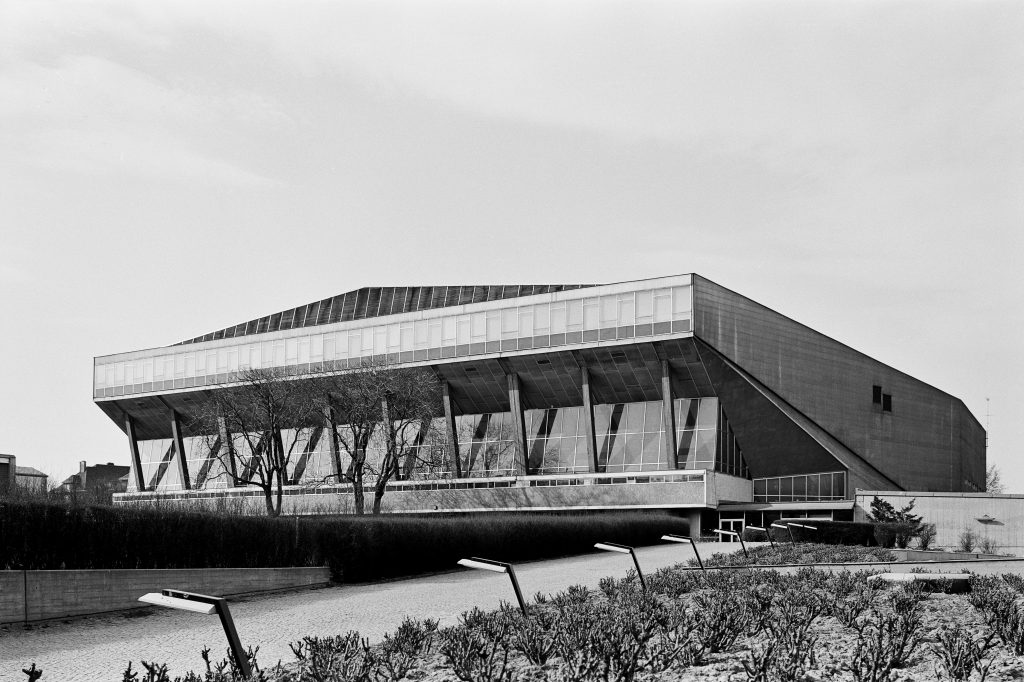
Roland Rainer: Stadthalle Wien, Vienna 15, AT, 1954–1958
© Architekturzentrum Wien, Collection, photograph: Margherita Spiluttini
At least since the study commissioned by the City of Vienna of person-related street signs, where Roland-Rainer-Platz is categorised as "a case requiring discussion", issues have arisen around the gaps the architect himself left in his biography during the Nazi period.
Roland Rainer (1910–2004) numbers among the most notable Austrian architects of the 20th century. His buildings are key to the identity of modern democratic Austria.
Rainer’s housing estate concept for the “structured and dispersed city”, realised in parts at Am Mauerberg in Vienna (1962–1963) and in Puchenau near Linz (from 1963), is still considered an important model of space-saving housing. During the Nazi period, Rainer acquired his knowledge of fundamental urban research at the Deutsche Akademie für Städtebau, Reichs- und Landesplanung, which served him after 1945 as the basis for a series of theoretical publications. The continuity of the concepts in Rainer’s work and his professional career suggest flexibility in adapting to different political systems. However, the Nazi years have been omitted from publications and essays by and about Rainer to date.
The acquisition of his estate by the Az W Collection in 2015 has provided an opportunity to re-examine his oeuvre and his biography. In cooperation with the Academy of Fine Arts Vienna, SammlungsLab #3 presents, and opens to discussion, the initial findings of extensive architectural research undertaken in Austria and abroad.
Curators: Ingrid Holzschuh, Monika Platzer, Waltraud Indrist
Design/graphic design: Waltraud Indrist
